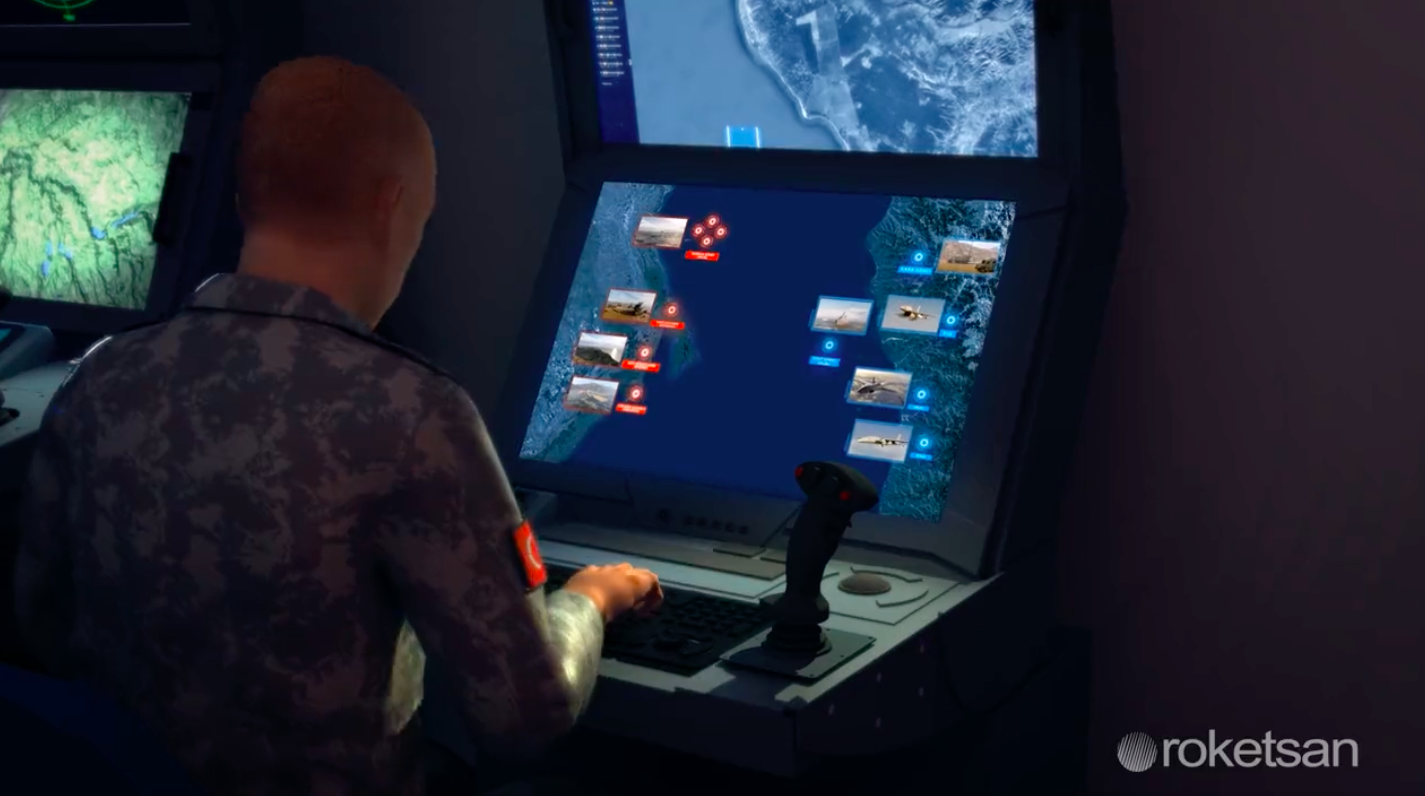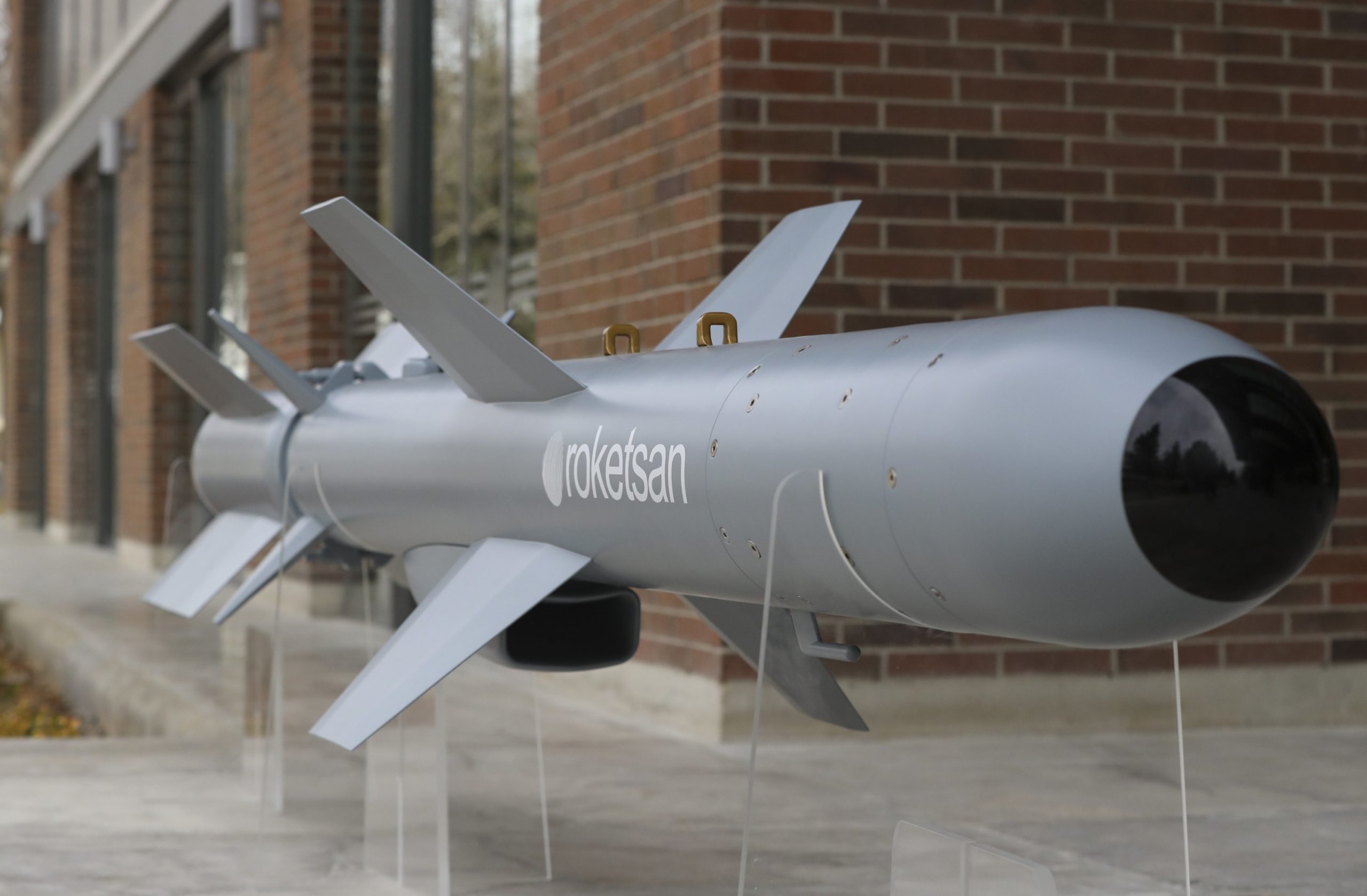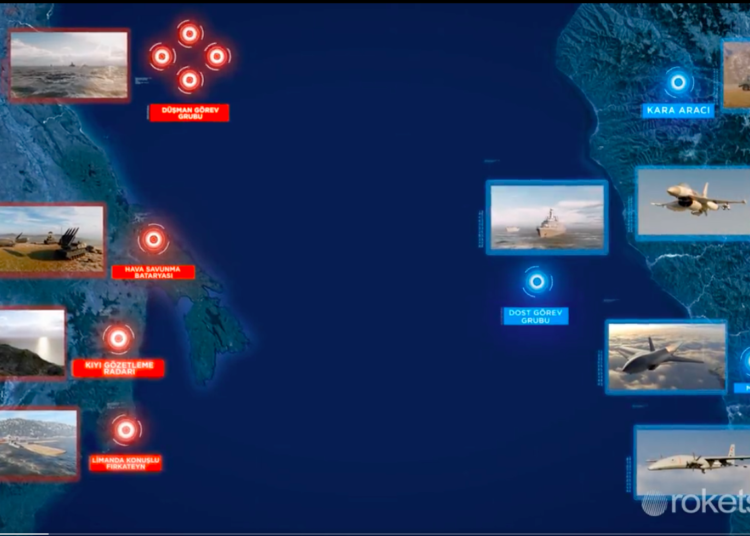Levent Kenez/Stockholm
Turkish weapons manufacturer and defense contractor Roketsan, a subsidiary of the Turkish Armed Forces Foundation, introduced its new missile last week. The cruise missile, named ÇAKIR (“grayish blue” in English), has a range of over 150 kilometers and can be fired from many platforms including fixed and rotary-wing aircraft, assault unmanned aerial vehicles, tactical wheeled vehicles and naval platforms.
Hedef Tek, Gözü Pek! #ÇAKIR 🚀 #Roketsan 🇹🇷 pic.twitter.com/tJ7cjCvIuX
— ROKETSAN (@roketsan) March 31, 2022
A simulation video produced for the promotion of the new missile includes messages for Greece. Military experts speaking to Nordic Monitor state that large arms-producing companies similar to Roketsan have made more global promotions for their international customers but that Turkish companies have been producing simulations targeting Greece and other neighbors for years.
Experts who analyzed the images for Nordic Monitor said the location from where the missiles are fired in the video is the coast of Çeşme in the west of Turkey and that the satellite map in the video has been reproduced with minor changes.

They also state that the real islet and rocky images visually featured in the video confirm that they are the shores of Çeşme. In this case, the place shown as the enemy in the video is the Greek island of Chios, which is 4.1 miles from the Turkish coast.
In the video, the Turkish side appears subliminally to be friendly forces, or according to military terminology, as blue forces, while the other side is defined by the color red, which means enemy.
In this case, it is certainly no coincidence that the missiles were fired from east to west in the video. In such videos, missile simulations are generally from left to right, but in the ÇAKIR video, missiles are fired from right to left and enemy targets are destroyed, giving a subliminal message that the target is Greece.

Turkey says the Greek islands should be demilitarized according to the 1923 Lausanne Treaty and sees them as a threat.
“These islands were given to Greece in the 1923 Lausanne Treaty and the 1947 Paris Peace Treaties on the condition that it not arm them. But Greece started to violate that in the ’60s. …. These islands were ceded conditionally. If Greece does not stop, the sovereignty of these islands will be questioned. … If necessary, we will issue a final warning,” Turkish Foreign Minister Mevlüt Çavuşoğlu said on state broadcaster TRT on February 10.
Nordic Monitor previously reported that in a July 13, 2021 letter to the UN Security Council, Feridun Sinirlioğlu, the permanent representative of Turkey to the UN, wrote that “Greece’s continuing deliberate and persistent material breach of the demilitarization provisions of the Lausanne and Paris peace treaties, which are essential to the accomplishment of their object and purpose, constitutes a serious threat to the security of Turkey.”
“Greece is in breach of basic provisions of the treaties under which it acquired sovereignty over the islands, which, from a legal point of view, means that Greece cannot, vis-à-vis Turkey, rely on its title under the same treaties for the purposes of a maritime boundary delimitation,” he added.
In January Turkish naval academy students were seen swimming the distance between Turkey and the Greek island of Kastellorizo (Meis in Turkish) in a video published on the official Twitter account of Turkey’s Defense Ministry. Defense Minister Hulusi Akar had recently stated that the cadets would swim to Kastellorizio, explaining it as being very close to Turkey in discussions about the island.
The video starts with Akar stating that the cadets would swim to the island, then continues with the presentation of a commander at a swimming pool saying, “We will perform the open sea phase of our swimming training today.” It resembles a fictional production with different shooting angles and post-editing. Drone footage was used to make it more effective.
According to Roketsan, the design studies of the “indigenous and national” ÇAKIR cruise missile are continuing, with the first test shots scheduled for 2022 to be made by Bayraktar Akıncı, a Turkish-made, state-of-the-art unmanned combat aerial vehicle, and platform integration planned for 2023.













